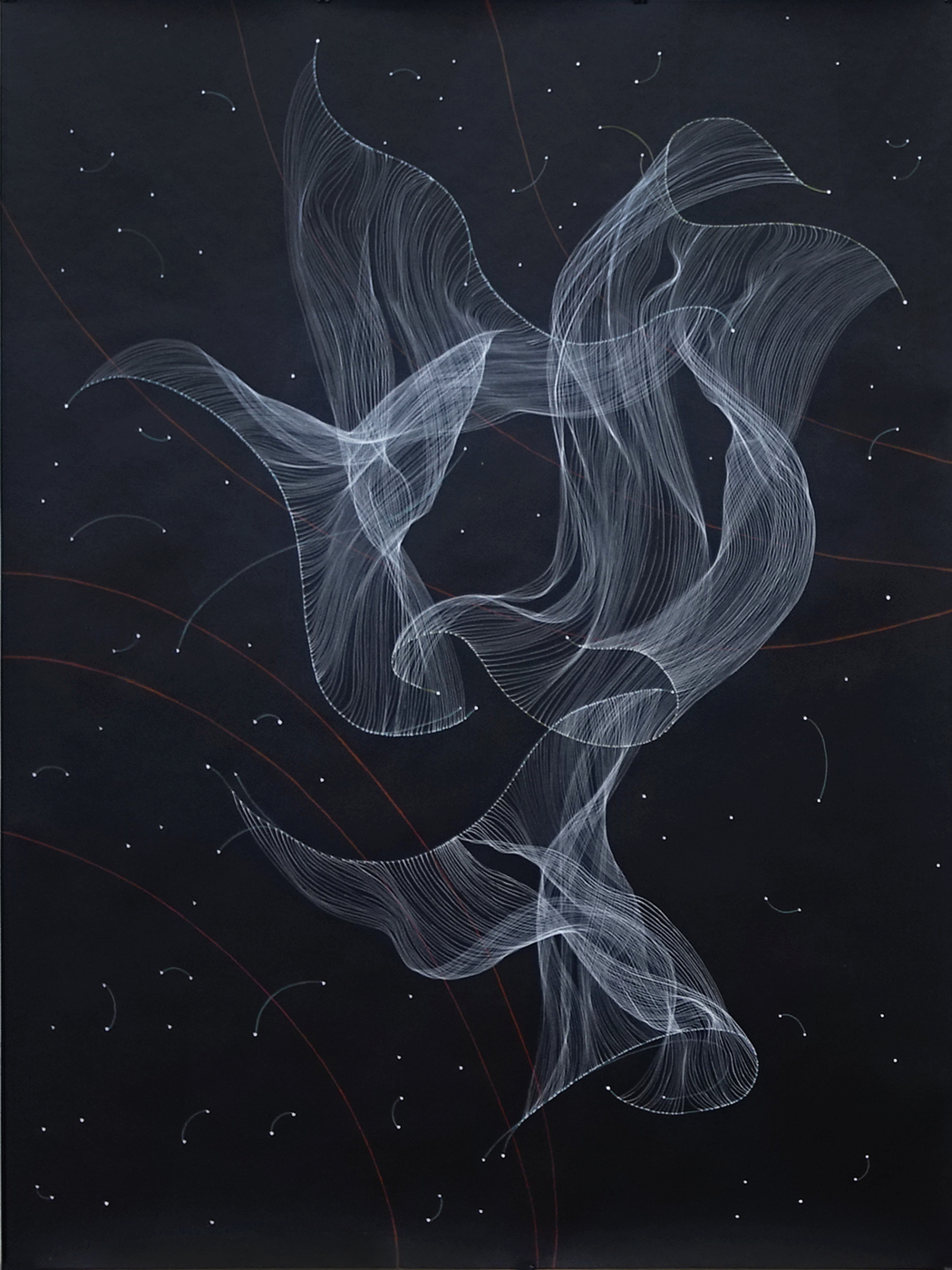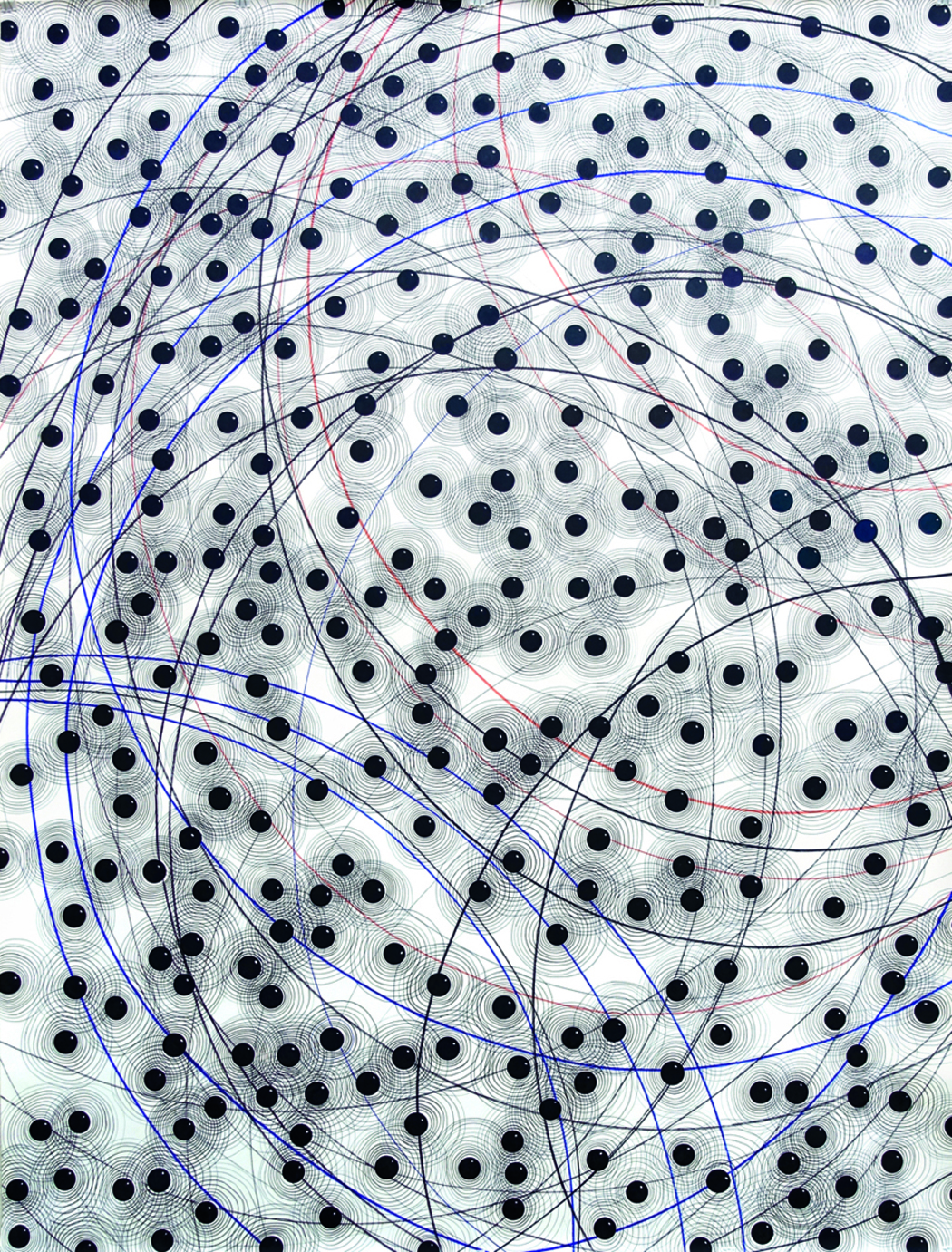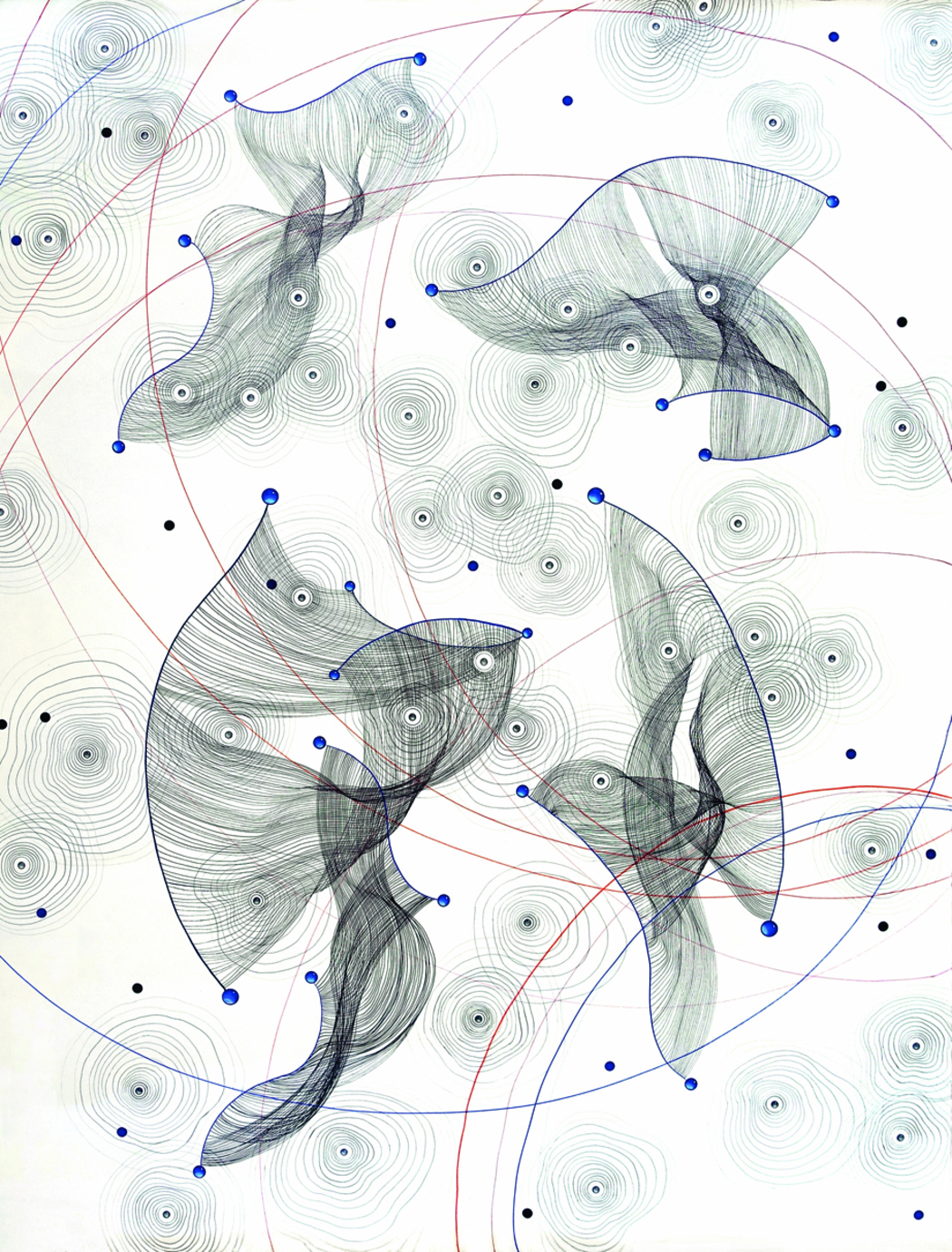Korvin Reich
Year of birth: 1970.
Where do you live: Wernigerode, Harz Mountains, Germany.
Your education: Meisterschüler at the University of the Arts Berlin (2002), awarded “Meisterschüler par excellence” by the Karl Hofer Society.
Describe your art in three words: Exploring the mind.
Your discipline: Drawing, coloured drawings, poetry.
Website | Instagram
 Korvin Reich | Wehende form V | 2024
Korvin Reich | Wehende form V | 2024
You describe your drawings as investigations of the mind. What sparked this conceptual focus in your artistic journey?
The investigation of the mind is one of humanity most important questions, I believe. How do I react to the world? How do I interact with it? Ultimately, it is always the confrontation with the finiteness that we encounter everywhere — and with death. And yet, humanity is still searching for happiness, for well-being. So how can this dilemma be resolved?
Over the centuries, art has become an independent discipline. Thus, it gives me the freedom to explore these important questions in their context. The focus on the mind is my anchor; drawing is a way to convey this outwardly. But this can only be conveyed “between the lines” or “between the characters,” and that’s a good thing.
The focus on the mind brings calm, and focus and calmness need strengthening in this day and age.
Your work often blurs the line between hand-drawn and printed matter. Is this intentional? What do you hope viewers feel when they realize it’s all hand-drawn?
This effect is certainly intended. The drawings invite a second look. The human being is the focus, not the computer or new media. People must not forget that. When viewers discover that the hand drawings are hand drawings, I often see happy surprise in their eyes. Beyond the signs and lines, the drawings convey something entirely different, something spiritual or something like an aura. I see that as something very valuable. This makes people superior to the media and I want to remind them of this.
 Korvin Reich | Radiale | 2024
Korvin Reich | Radiale | 2024
Many of your works seem to involve mathematical or systematic elements—like “Project π”. How does logic or science intersect with your intuitive process?
Centuries ago, art and science formed a unity. I consider this relationship important. Science is not merely “cold-hearted” or “based solely on facts”; it thrives on intuition just as much as art.
The element of “beauty” is recognizable in both disciplines, for example, the beauty of a sequence of numbers like π. I would like to dare to engage with it directly in today’s art context, not just indirectly with its opposite or with its distortion into kitsch. It, too, has its laws, and in this it is closer to science than one might assume.
With the number π and its infinite sequence of numbers, one inevitably comes into contact with the theme of infinity. This cannot be represented on a sensory basis. Intuition, whether on the part of the artist or the viewer, is needed to make this dimension tangible in a work of art.
Another element is unpredictability, which appears equally in art and science. For example, in seemingly disordered systems. Art can contribute to the visual investigation of these disordered systems.
Each of them, art and science, have a shaky stand without the other.
I believe it’s especially important in our time that they are becoming closer again, as was the case, for example, with the septem artes liberales (the seven liberal arts) in antiquity.
How did the collaboration with the ballet production “PI” come about? What was it like to see your drawings in motion on stage?
I personally see numbers as colors; at least, my interest in this number or number sequences in general was awakened. As far as I could, I pursued mathematical phenomena and began to incorporate them into my artistic considerations. Even in the years before, I had always had an artistic connection to science. I asked the composer C. René Hirschfeld if he would be interested in exploring pi musically, which he then did.
Eventually, we came into contact with the choreographer Miro Magloire and his New York Chamber Ballet, and so the idea expanded into dance, and the joint project was born. For the composition “Pi – Sound of Infinity,” my drawings were projected onto the floor and onto dancers who danced Magloire’s choreography PI. Performances were held in 2024 at the Kunstmuseum Magdeburg and in Berlin.
I created a film from the drawings, partly with the drawings in motion, which also formed the basis for the choreography, which I found to be very sensitive and very much in tune with my drawings, almost like an extension.
It was a truly beautiful experience for me to see the images projected at this scale in the space. The dancers wore uniform white leotards, so they too formed small, moving projection surfaces within the larger ones. You could walk around the stage, offering a new view from every side. Add to that this incredibly intense and richly sonorous composition – a complete work whose individual parts reinforced each other and thus transcended themselves.
 Korvin Reich | Pink noise | 2023
Korvin Reich | Pink noise | 2023
How do poetry and visual art interact in your creative practice? Do they influence one another?
When I draw and when I write, I enter a space where I walk almost as if I were sleeping or breathing – something is happening, but you don’t know how. You don’t think about it either. You wait.
I create from a ground from which something seems to grow of its own accord.
On this level, words and signs, but also images, even music, find their common ground.
I see words alongside their meaning like images, signs like a language that we may or may not understand. As in the visual level, language also has non-linear processes, fields of meaning that branch out as if into a space.
Your drawings feel both fluid and precise. Could you walk us through your process—do you begin with a plan, or let the drawing evolve freely?
Free, intuitive forms are combined with certain defined processes. When depicting these dynamic processes, unpredictable structures emerge that develop their own laws. The individual elements form higher-level structures that go beyond themselves. What happens in the end cannot be planned; surprise is always there, just like in real life.
When I define these processes, it may take a few preliminary sketches before I start the artistic work.
Even when I work with free forms, I define that beforehand, so I plan not to plan anything. From the first free forms, the exact plan emerges, which I then define and then implement freely. It works hand in hand.
 Korvin Reich | Flying shapes with spheres | 2024
Korvin Reich | Flying shapes with spheres | 2024
Do you consider your art closer to abstraction or a form of visual science? Or do you reject such classifications altogether?
I think abstraction is a kind of visual science, and also an important component of the various sciences themselves.
Details are omitted, or their common foundations are found, which are then examined separately, their relationships to one another, and their laws.
That’s a good question, because I really try to find such foundations or general modes of action in my drawings and bring them to fruition, which then naturally happens in a free, intuitive way.

Leave a Reply